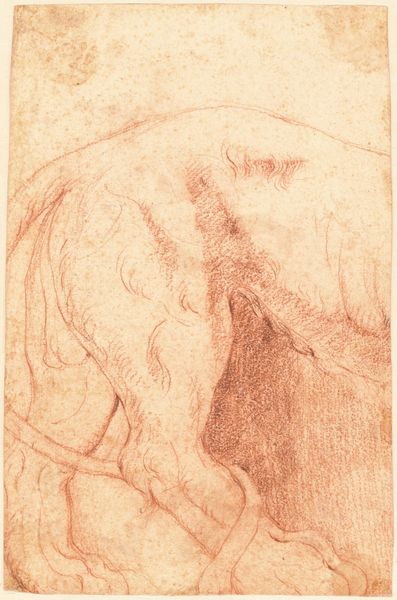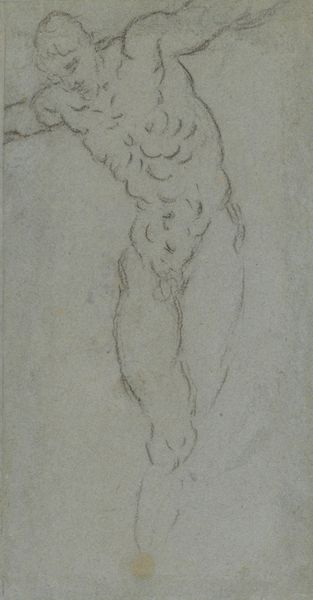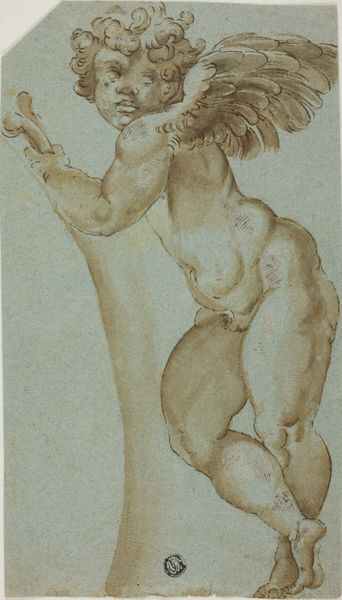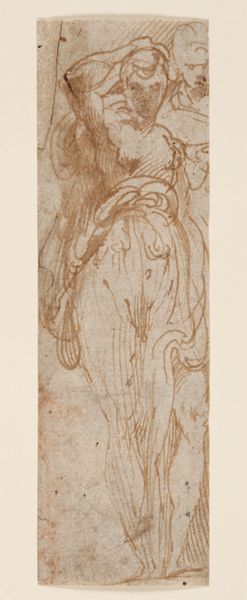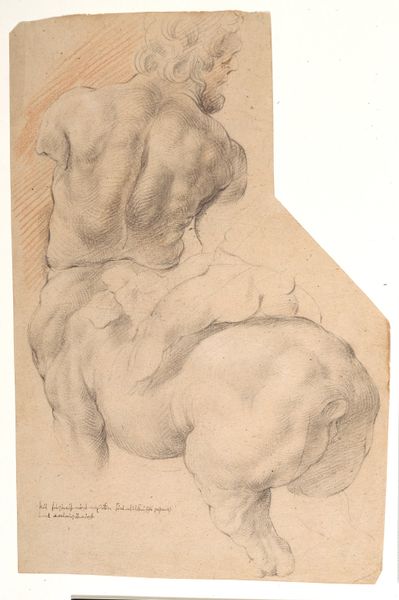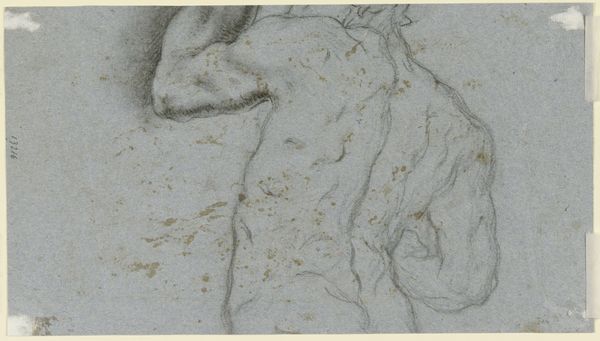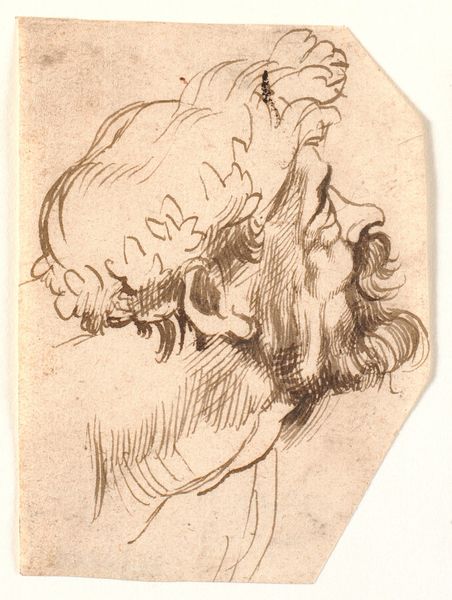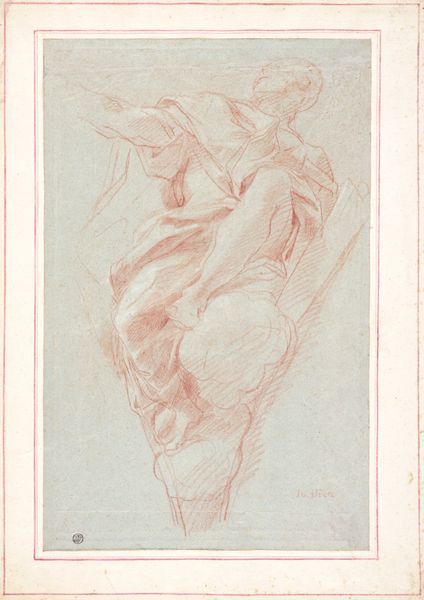
drawing, paper, pencil
#
drawing
#
baroque
#
pencil sketch
#
charcoal drawing
#
figuration
#
paper
#
oil painting
#
pencil drawing
#
underpainting
#
pencil
#
watercolor
Dimensions: 249 mm (height) x 355 mm (width) (bladmaal)
Curator: Here we have Willem Panneels’ “Samson Breaking the Lion's Jaw. The Lion”, created around 1628-1629. It’s rendered in pencil on paper. Editor: The immediate impression? A raw, ferocious energy practically vibrates off the page! The lion's pose— contorted and struggling – you can almost hear its roar. Curator: Precisely. And I think it is more relevant if we think of the means of production during this time in Northern Europe, and how much society valued these symbolic biblical depictions. Here's the potential artist labor, materials (sourced often locally), as well as patronage to reproduce biblical themes and social narratives for the elite. It certainly places high art closer to what we might disregard now. Editor: Absolutely, and as you mention that I wonder - how often do we stop and consider what goes on "behind the scenes" of something monumental. In addition to the socioeconomic structures for these kinds of materials at this time, It feels unfinished, a peek into Panneels' process as well as providing a deeper intensity which heightens the animal’s agony...it almost evokes more sympathy this way. I guess a finished piece might mask it. Curator: I would agree with that. The deliberate choice to expose process reflects both material accessibility and an understanding of craft itself. It questions hierarchies often assigned arbitrarily. Editor: A powerful blend, I feel, to the lion itself. What you said connects back into a timeless, essential struggle. Maybe there is beauty in the breaking? Curator: It presents the struggle rather starkly and economically doesn't it? I find the materiality as equally fascinating and relevant as it is aesthetic and sublime. Editor: A thought-provoking piece overall...It has given me much to think about, and perhaps it could benefit me to adopt some of Willem's methods when I work.
Comments
No comments
Be the first to comment and join the conversation on the ultimate creative platform.


